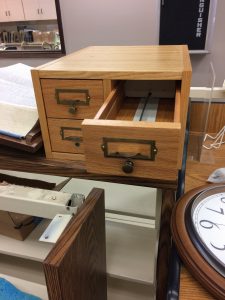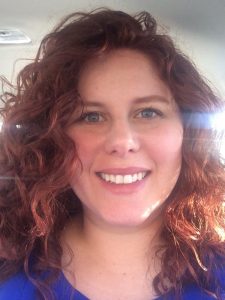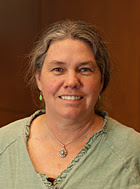Would you like to know more about the history of SustainRT? Here are some useful sources of information:
[Website]
SustainRT History URL: http://www.ala.org/rt/sustainrt/sustainrt-history
Abstract: The ALA Sustainability Round Table (SustainRT) morphed out of ALA’s Social Responsibilities Round Table’s Task Force on the Environment (TFOE) during “Libraries for Sustainability,” a four-part series of free webinars offered in 2012. New leaders emerged from our virtual “grass roots” to form an interim steering committee. The next step was gathering 100 signatures for the petition to create SustainRT. More than 100 were gathered. At Midwinter 2013, SRRT leadership gave us their blessing as such, and approval of the Round Table at ALA Council was swift.
[Webinar]
Libraries for Sustainability: a Four Part Webinar Series. Facilitators: Madeleine Charney, Bonnie J. Smith, Beth Filar-Williams. URL: https://greeningyourlibrary.wordpress.com/2012/10/26/libraries-for-sustainability-a-four-part-webinar-series/
Abstract
“A Call to Action” – Part 1 of Webinar Series “Libraries for Sustainability” February 28, 2012.
“Exploring Sustainability Practices in Libraries” – Part 2 of Webinar Series “Libraries for Sustainability” April 24, 2012.
“Engagement in Professional Library Organizations” – Part 3 of Webinar Series “Libraries for Sustainability” June 12, 2012.
“Exploring More Sustainability Practices in Libraries” – Part 4 of Webinar Series “Libraries for Sustainability” August 28, 2012.
[Journal Article]
Williams, Beth Filar, Madeleine Charney, and Bonnie Smith. “Growing our vision together: forming a sustainability community within the American Library Association.” Sustainability: Science, Practice, & Policy 11, no. 2 (2015). URL: http://scholarworks.umass.edu/cgi/viewcontent.cgi?article=1044&context=librarian_pubs
Abstract: In 2014, after two years of focused research and promotion, the American Library Association (ALA) approved a new group, the Sustainability Round Table (SustainRT). This article describes how library advocates built SustainRT over the years and gained momentum with a pivotal webinar series. Clear signs of SustainRT’s early success are a testimony to the critical need for a sustainability-related Community of Practice (CoP). The article shows how the steps taken to achieve this national group’s standing can serve as a model for fostering dialogue and collaboration (often through virtual means) that allows for wide participation.
[Poster]
Charney, Madeleine and Smith, Bonnie and Filar Williams, Beth (2016) Growing our Vision Together: A Sustainability Community within the American Library Association. Poster presented at: IFLA WLIC 2016 – Columbus, OH – Connections. Collaboration. Community in Session 101 – Poster Sessions. URL: http://library.ifla.org/1539/
Abstract: This poster reports on the formation of the American Library Association (ALA) Sustainability Round Table (SustainRT) in 2013, the result of an urgent call to action for a unified effort to address the new millennium’s environmental, economic and social sustainability challenges within the library profession in the United States and Canada. This poster identifies the technologies, processes, roles and other factors that led to the founding of SustainRT, as well as providing a vision for the future based on its participatory and inclusive structure.
[Documents]
- SustainRT Annual Report 2016-2017
- ALA Resolution on the Importance of Sustainable Libraries (2015)
- ALA Task force on Sustainability (2015).
The formation of the ALA Task Force on Sustainability is a direct outgrowth of the 2015 resolution introduced by SustainRT and co-chaired by SustainRT’s Immediate Past Coordinator, Rene Tanner and Chair of the Governance Committee, Rebekkah Smith Aldrich. The Task Force is charged to develop a white paper that describes areas of focus and recommendations for the ALA Executive Board to increase the adoption and implementation ofsustainable practices by the Association, the profession, libraries and thecommunities they serve. Timeline: Interim report to the ALA Executive Board, 2018 ALA Midwinter Meeting, Denver; Final report to the ALA Executive Board, 2018 ALA Annual Conference, New Orleans


